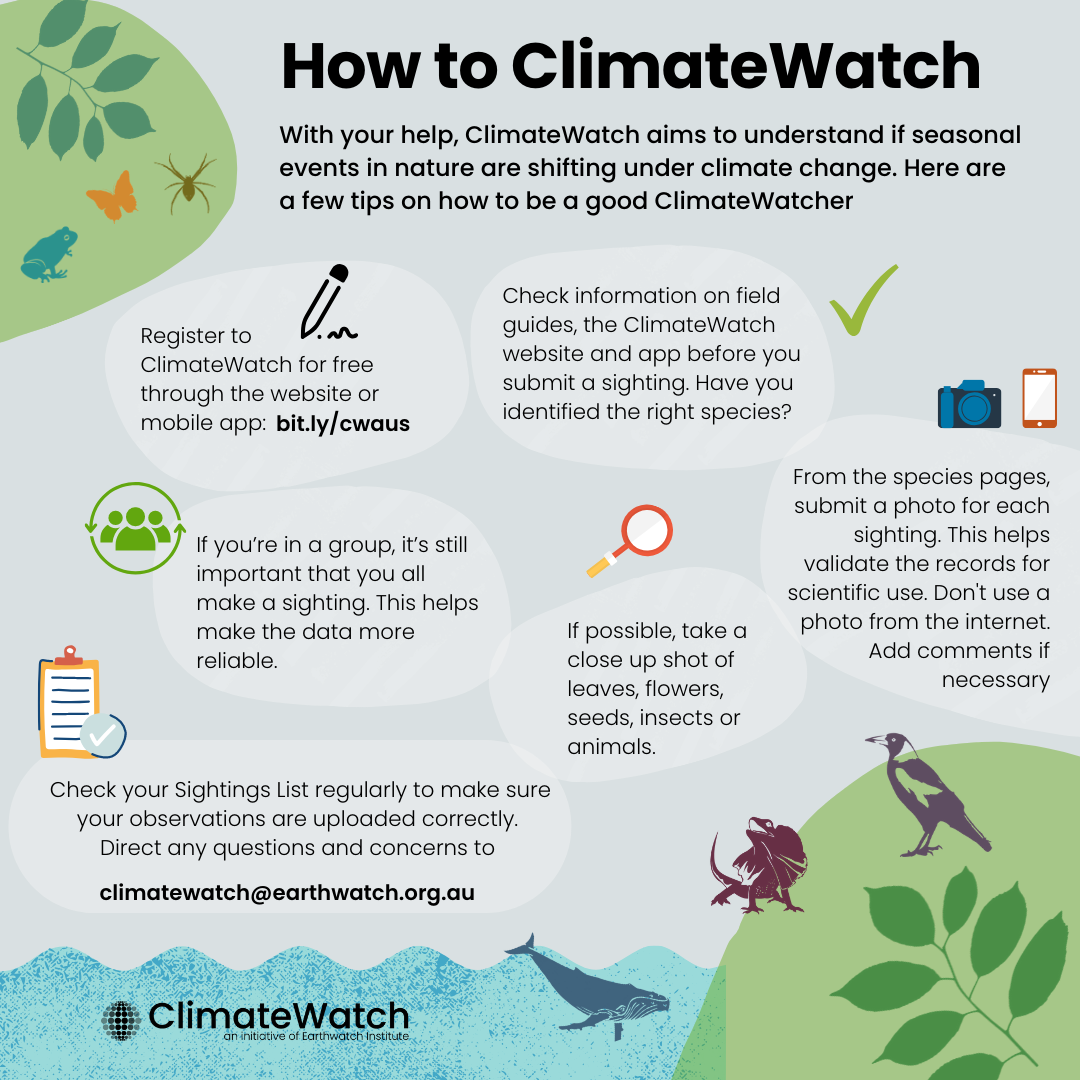Alternatively, if you have a ClimateWatch species that you see all the time (like in your backyard), record an observation every couple of weeks to get an idea of changes throughout the year.
Sightings
Photos are compulsory for all observations to assist us in validating your data for use in scientific research. If uploading sightings via the web app, make sure it is your own photo and not a friend's photo or one from the internet. ClimateWatch is only interested in wild animals, so please do not submit any photos of caged birds.
The perfect ClimateWatch photo is a close up of the species. For trees, this means a picture of the leaves, fruits or seeds, so our species experts can verify what you've seen. For animals, try to zoom in or get close to the species before taking the shot, and make sure the photo is not backlit.
Smart devices
It's a good idea to leave some notes in the Additional Comments section if you have time, to include any other information you think may be relevant. For example, if you identified a bird by its call and did not get a good quality photo of it.
If you are ClimateWatching in a group, it is still important that all of you submit an observation with a unique photo from your devices. This makes the data more reliable.

